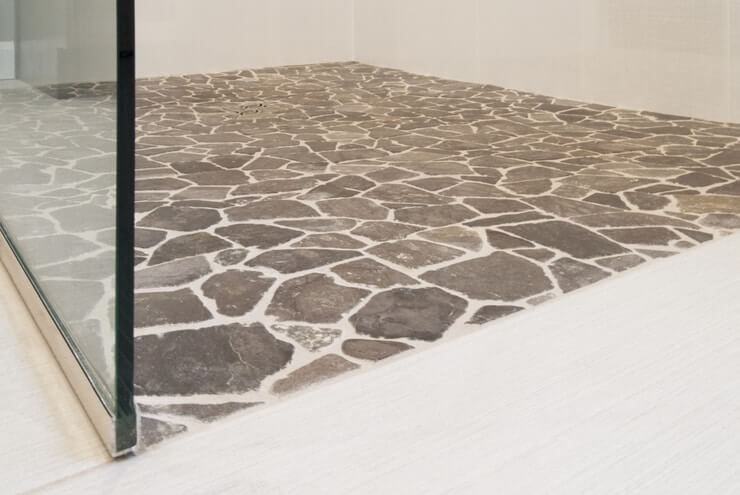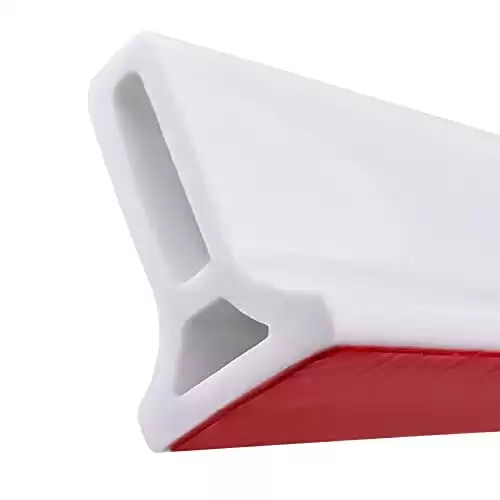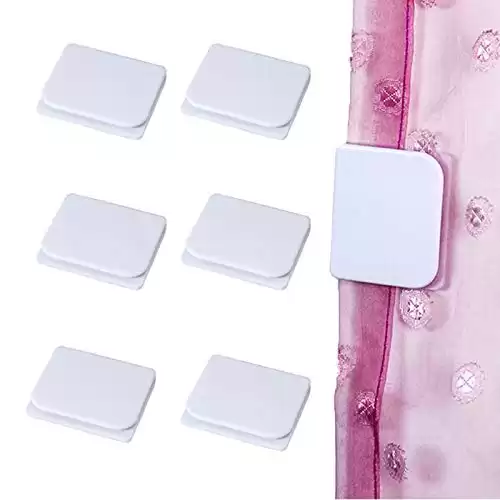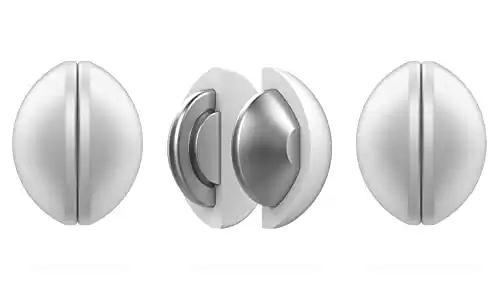Is your walk-in shower causing havoc with runaway water and slippery floors?
Say goodbye to the stress of potential water damage and a hazardous bathroom.
Explore effective solutions to keep water inside your walk-in shower or prevent it from splashing out, ensuring a safer and more comfortable bathroom environment.

How to Keep Water from Running Out of a Walk-In Shower
Ideally, you want to keep water from running out of your walk-in shower by ensuring that the shower base is sloped toward the drain, but there are other methods to accomplish this.
1. Keep the Showerhead Pointed Downward and Inward
This first tip sounds simple, but often it’s the only thing you need to do to prevent those puddles of water on the bathroom floor when you shower.
Making sure you aim the showerhead downward and slightly inward makes it less likely for the shower water to come out of the shower space.
2. Add a Shower Lip to Keep Water In
A shower curb, shower lip, shower dam, or shower threshold serves as a border between the shower pan and the bathroom floor.
Their primary purpose is to keep water in the shower area and keep it from running out.
Shower lips can be built or bought, and you can usually find them fabricated out of concrete, wood, rubber, or silicone.
A rubber or collapsible shower threshold is the easiest to install since it’s highly adhesive and you most likely only need to stick it to the floor.
It will keep the water from the shower contained, but as a general rule, get a shower curb at least 2-inches high above the top of your shower drain.
Also, consider applying silica gel to the connection between the threshold and the floor surface to prevent leakage.
Rubber shower dams are also easy to clean and maintain.
Plus, they are 100% waterproof, so there’s no need for protective coatings and paint.
You can also buy it at length, it’s easy to cut, and can be molded into different sizes and shapes to fit your shower design.
3. Install a Linear Trench Drain
Install a linear trench drain if you don’t appreciate having barriers like collapsible thresholds or splash guards in your shower’s entrance.
Unlike traditional shower drains, a linear drain maximizes drainage in case there’s excess water in your shower.
It is usually placed along the entrance of the shower, so any excess water will drain out before running out of your shower.
This solution is ideal if the main cause of water running out from your shower is extremely high-water pressure.
This way, you can enjoy a barrier-free entrance to your shower without worrying about water leaking onto the bathroom floor.
This type of shower drain is also flat, providing a lot of accessibility advantages, even with a wheelchair.
It’s important to note that a linear trench drain will work best for shower floors that are slightly sloping so the water can drain seamlessly through the drain.
How to Stop Water from Splashing Out of a Walk-In Shower
Water running out onto the floor isn’t the only problem with walk-in showers. There can also be an endless battle with shower splashing, which causes the same issue, a damp bathroom floor.
Besides keeping water from the shower from leaking out, these strategies will prevent water from spraying out of the shower as well.
1. Install Shower Splash Clips
Sometimes water can splash out onto the bathroom floor even with a shower curtain installed.
That’s because the shower curtain can billow while you take a shower, resulting in your frustration when the curtain sticks to your skin and you find a damp mess on the floor that you have to clean up afterward.
But if you install curtain splash guards or splash clips, they will hold the shower curtain against the wall, keeping the water from spraying and escaping.
- No dama installation - peel off and press on the wall to install
- Protects from splashes and from curtains blowing in
- Provides additional weight to keep the curtain in place
Splash clips are super affordable and easy to use.
They have an adhesive side you can quickly peel, then stick to the wall.
2. Use a Weighted Shower Curtain
A standard shower curtain with splash clips works for keeping water from splashing out of the shower, but another option is switching to a weighted shower curtain.
Heavier curtains are less likely to billow in the shower, making them effective in containing the water inside the shower area.
But for best results, get a weighted curtain that’s long enough for effective coverage, but it shouldn’t touch the floor.
There should be approximately 2-4 inches of space between the bottom of the weighted shower curtain and the floor.
Otherwise, you risk mold growing on the curtain if the curtain is dragging on the floor.
But if you don’t want to buy new a shower curtain, you can make your existing curtains heavier by attaching weights or magnets at the bottom.
- Strong magnet
- 10 oz weights prevent the curtain from blowing in
- Silicone cover to protect your curtain and weights from rusting
Just ensure that whatever materials you use will not rust since it will most likely get drenched.
3. Add a Shower Door
Walk-in showers look fantastic and modern.
But if your problem is caused by water running out and splashing out onto the bathroom floor, the most straightforward solution is installing a shower door.
It’s also the most effective way to contain water inside the shower and prevent any slippery mess on the bathroom floor.
Consider transparent shower doors or glass shower doors if you’re concerned about the aesthetic value of your walk-in shower.
Final Thoughts
It’s no secret that walk-in showers look modern and, overall, aesthetically pleasing.
Not to mention, they offer convenience to the elderly and people with special needs. Unfortunately, walk-in showers have drawbacks.
One major disadvantage in their design is there is no curb that can help prevent water from running or splashing out of the shower.
But this issue is easily rectified by the tips above, and there are plenty to choose from.
But if one solution is not effective enough in stopping water from running out of your walk-in shower, don’t hesitate to combine several of them.
For instance, you can use corner splash guards and a weighted shower curtain, so there’s no risk of water running and splashing out onto the bathroom floor.




